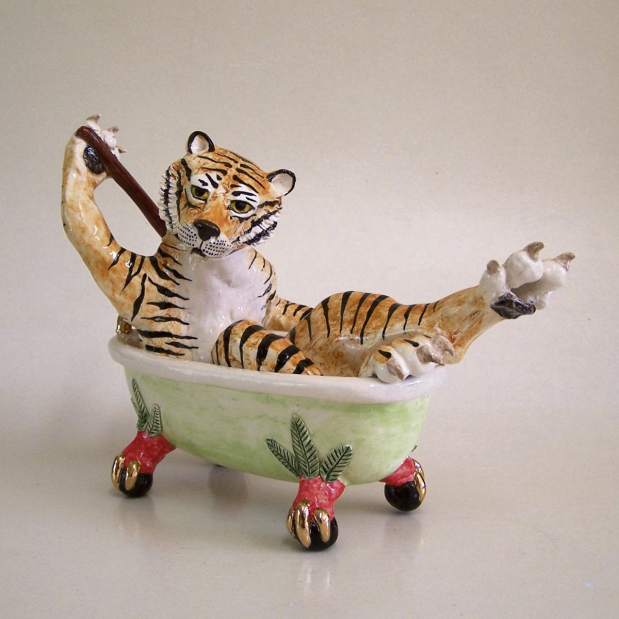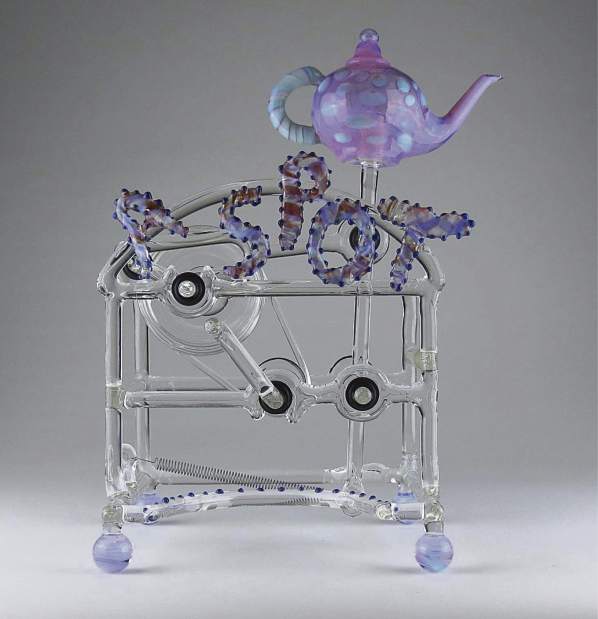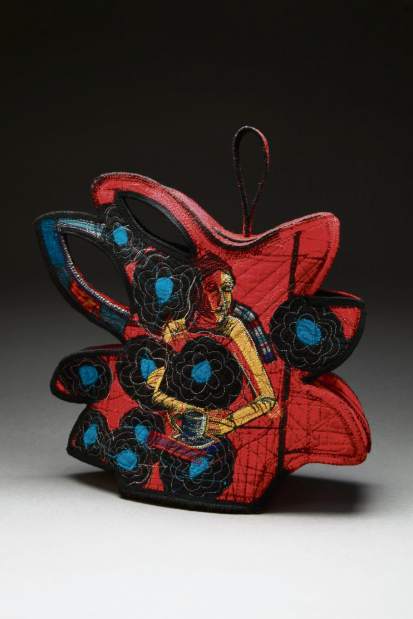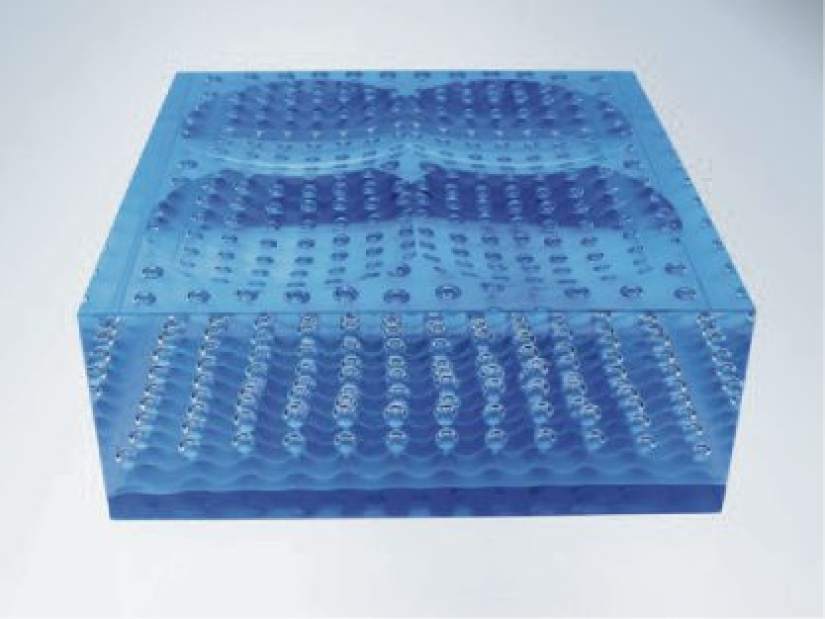Artists push the boundaries in annual spring teapot show
One look at “Teapots! 11,” the annual teapot-themed exhibit on display each spring at Morgan Contemporary Glass Gallery, and you will never look at another teapot the same again.
Now in its 11th year, the exhibit has grown from an all-glass teapot show to one of many forms of expression. And as visitors to the exhibit will see, artist-made teapots especially can take the form of just about anything the artist making it can dream up.
The exhibit features teapots created by more than 60 artists from around the country, made from a myriad of materials, from ceramic to fiber, wood to glass, metal and more.
For example, Kay Kahn, a fabric artist from Santa Fe, N.M., created a “Chrysanthemum Teapot” made entirely of quilted and embroidered silk.
“For this teapot, I began to imagine a flower, specifically the chrysanthemum,” Kahn says. “The compact tightly petaled center would form the vessel's mass, while the outer, looser and errant petals would make the spout, handle and lid. The teapot became a stylized blossom.”
As Kahn is quick to point out, one can't mention building a teapot without someone acting out the childrens' song “I'm a little teapot ...”
“With that vague association in mind, I stitched a figure drinking tea on one side, surrounded by black chrysanthemums,” she says.
Though admittedly the teapot form is not the norm for this artist, who primarily creates armor-inspired fabric sculptures and textile jewelry, she says, “I like to play with narratives. One could say I'm an old-school object-maker. Creating the teapot was a fun and interesting challenge.”
Like Khan, many others in this exhibit stretched beyond their comfort zones when tackling the teapot challenge.
Indiana University of Pennsylvania art professor Sharon Massey makes jewelry, not teapots. But her “Brickwork Teapot: Pittsburgh” is a real standout piece in this exhibit.
Massey, who lives in Homer City and teaches jewelry and metals at IUP, used enameled copper as her primary medium to create a non-functional teapot that looks like an outcropping of urban buildings.
“My teapot was inspired by the architectural landscape of Pittsburgh, specifically the converging brick rooftops of houses and factories in neighborhoods such as Lawrenceville and the North Side,” Massey says.
Massey usually makes jewelry in silver, copper and enamel, but creating this teapot was the first time she used her metalsmithing skills to fabricate a teapot with a masonry theme. “I was excited to incorporate the chimney-like parts into the teapot design, and imagine steam would escape from the chimneys if the teapot were used,” she says.
Like Massey's teapot, most of the teapots in this exhibit are non-functional. But where form overcomes function, that's clearly where the fun begins.
Take for example “Bath Time,” which is a teapot that takes the form of a tiger in a bathtub, by Tucson-based ceramic artist Andree Richmond.
Richmond has been making whimsical work for practically the entirety of her career and, she says, “I find it's fun to let my imagination run wild and create them in the clay medium.”
Having worked in clay for 40 years, Richmond says she has been making more teapots in recent years than ever before.
“I find the constraints imposed by the ‘functional' elements of the vessel add interest to the creative process,” she says. “I've always had the fluid relationship between sculpture and vessel, and vice versa so teapots makes this a more interesting.”
“I love the challenge of a teapot, having to incorporate, a handle, spout and lid into a design so they enhance the piece,” Richmond says. “I have made bathtub sculptures before but this is my first teapot (in the bath tub theme). It was challenging to add the teapot components.”
Of course, this wouldn't be a teapot exhibit in a glass gallery without some remarkable works in glass. And among them, “A Spot Of Tea” by Bandhu Dunham of Prescott, Ariz., is a real showstopper.
A kinetic sculpture, when activated the teapot component lowers as if to pour tea. “I have been playing with kinetic glass sculpture for 15 years or so now,” Dunham says. “I love the way it messes with people's head to see mechanical glass parts moving. Conceptually, it is kind of shock because it violates expectations, seems impossible or magical.”
Dunham, who along with his assistants creates a line of goblets and other decorative glass items that he designs, says he doesn't typically create a lot of teapots, “but I like them for the same reason I like goblets. They are a defined category or motif that frames the creative process. Within this framework you have complete freedom to go wild, as the show demonstrates. Without such a framework, sometimes I just stare into space wondering what I'm going to do, because there are infinite possibilities and I have too many ideas spinning around in my head.”
An internationally respected glass artist, author and teacher, Dunham has written some pretty successful how-to books on glassblowing and teaches lampworking and glassblowing at studios, schools and conferences around the world. Perhaps his words sum up this show best: “One reason craft in general is appealing is that we can take ordinary functional objects and make them extraordinary, twist them, turn them on their head. That's actually a metaphor for how we all — artist or not — make life more interesting.”
Kurt Shaw is the Tribune-Review art critic.









